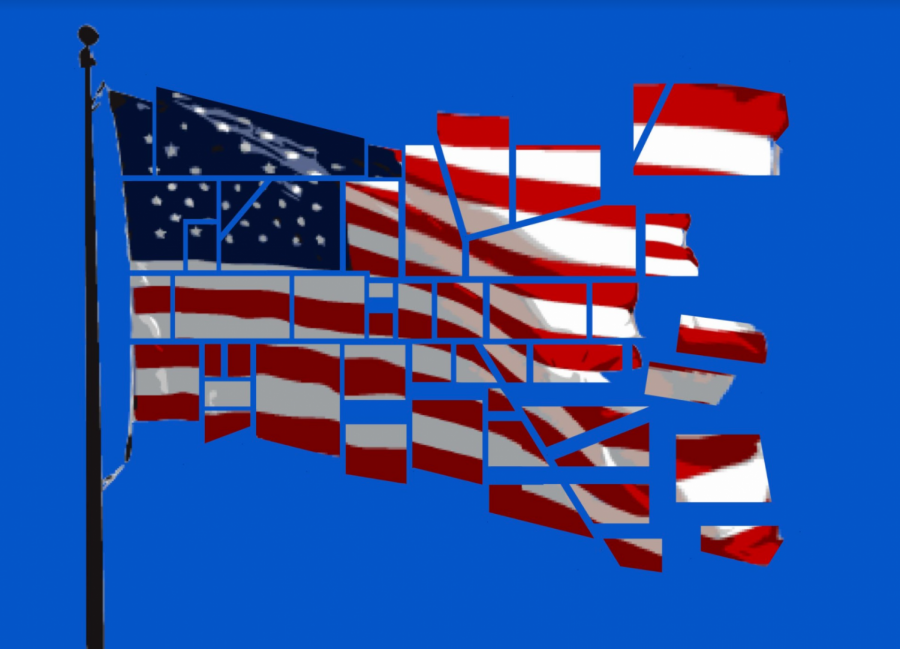Democracy’s Greatest Threat: The Electoral College
December 22, 2020
In 2016, Donald Trump was elected president by winning 306 electoral votes despite losing the popular vote by over 3 million. Since then, the Electoral College’s viability has been put into question. How does a system that was created to limit the people’s power to directly elect the president fare in a country that is seen as the face of democracy by many parts of the world? The short answer is: it doesn’t.
The power of a person’s vote should not be dictated by the state they live in. The number of electoral votes a state has is determined by the total number of Congressmen (determined by population) and Senators (fixed 2 per state) that represent it. This leads to inconsistencies. For example, California has 55 electoral votes and Wyoming has 3. This means that winning California gives a candidate the same amount of electoral votes as winning Wyoming 18 times over. However, California has a population of nearly 40 million, Wyoming has a population of 578 thousand, or roughly 1/68th of California’s population. This means that despite having 68 times the people of Wyoming, California only has 18 times the power when choosing a president. Because of this, a person’s vote in Wyoming has over 3 times the power of a single vote in California. This disproportionate distribution of electoral votes stretches beyond California and Wyoming. Rural states across the country hold more power in the Electoral College than their population justifies. In a time when ⅘ of the American population lives in urban areas, having a system that gives rural areas this advantage is nonsensical.
The electoral college also creates a winner-takes-all system. Except in the rare instance of a faithless elector, all of a state’s electoral votes go to its winning candidate. This means that, depending on the state in which a voter resides, their vote may not count at all. For example, a Republican voter in either California or Massachusetts—both of which heavily lean toward the Democratic Party—has no say in a presidential election. Both states will go blue and the Democratic candidate will receive all of that state’s electoral votes. The Republican’s vote is effectively useless. Furthermore, due to this winner-takes-all system, tight races in certain states can swing the entire election. The most evident case of this is the 2000 presidential election. Bush won Florida and all 25 of its electors despite winning the state by only 537 votes, allowing him to take the presidency. A margin as small as 537 votes determined who would become president, despite Gore winning the popular vote nationwide by roughly 500,000.
Indeed, like in Gore’s situation, the most obvious problem with the Electoral College is that a candidate holding a majority of the country’s votes can still lose. In 2016, 3 million more Americans thought that Hilary Clinton should be president over Donald Trump, yet Trump still won. The main reason for this is that a state’s electoral votes are not proportional to its population. This is apparent in the case of Wyoming and California, as stated earlier.
The Republican Party has only won the popular vote once since 1988, yet its candidate for president has served three terms since then. In a democracy, the people would decide who their president would be, but America isn’t a democracy, at least as long as the Electoral College is around.
America struggles to come to an agreement on nearly every issue. Yet the majority of Americans agree that the electoral system should be replaced by a popular vote. Unfortunately, the likelihood of an amendment being ratified to end the Electoral College is slim. The Electoral College benefits states with smaller populations, so their representatives would never vote to end it. But, a pact is forming among various states: the National Popular Vote Interstate Compact. The states in this pact have agreed to give their electoral votes to the winner of the national popular vote. This pact takes effect once enough states join and have a sum of electoral votes that exceeds 270. The states in this pact currently have a total of 194 electoral votes. The Electoral College would still exist, but it would be effectively meaningless. It is a potential solution to the flaws that the Electoral College brings, as long as enough states join.
The Electoral College has outlived its purpose. The state a voter resides in should not matter when choosing the leader of the country. Contrary to what the country’s name might suggest, when it comes to a presidential election, we are not united. We are not a single country coming together to choose a leader because we have been split into 50. It would appear that this twitter user agrees, writing: “the electoral college is a disaster for a democracy” -Donald J. Trump, 45th President of the United States.











